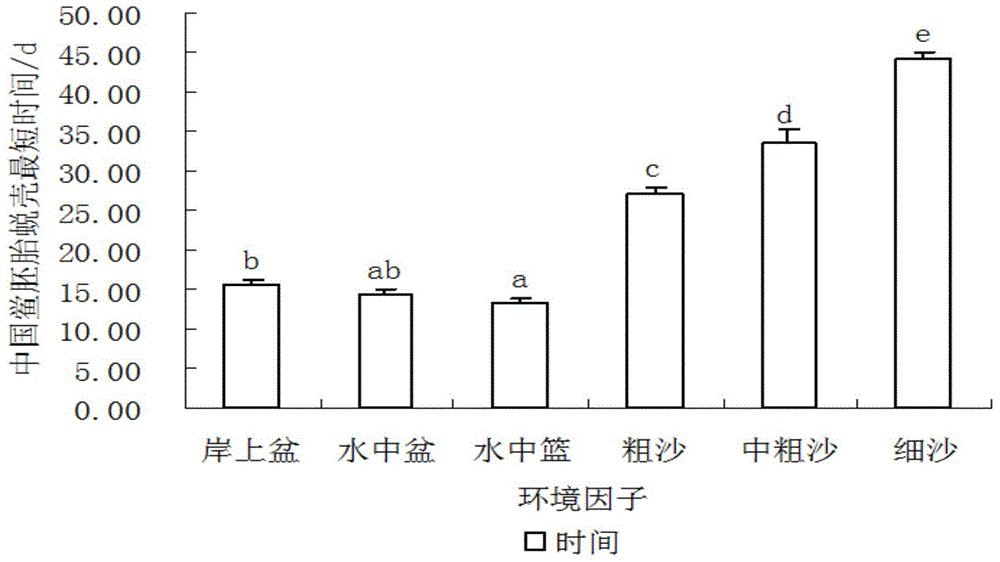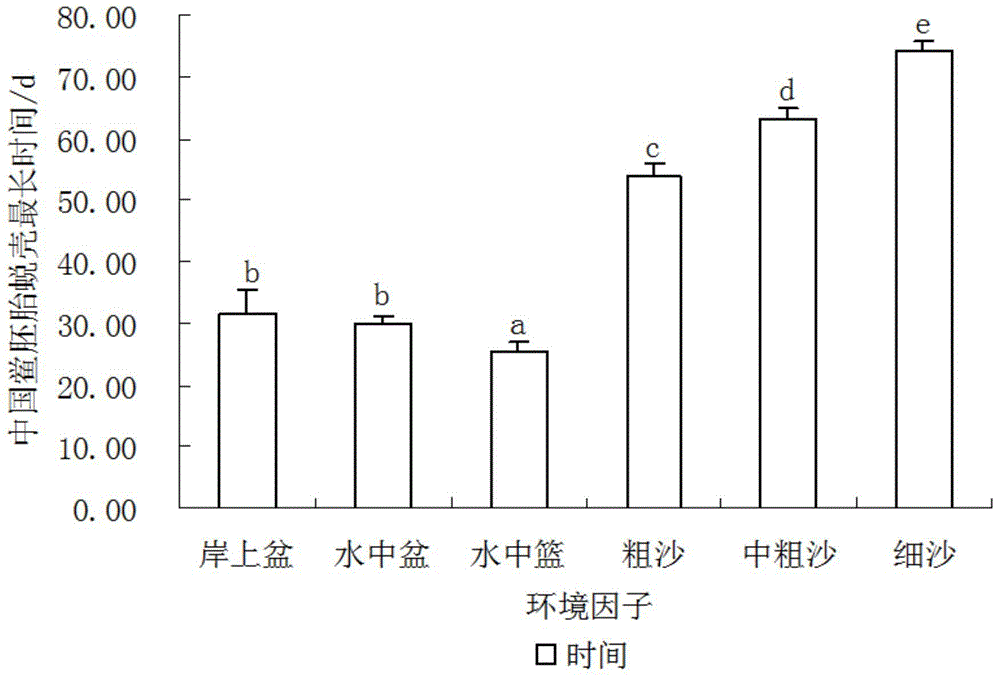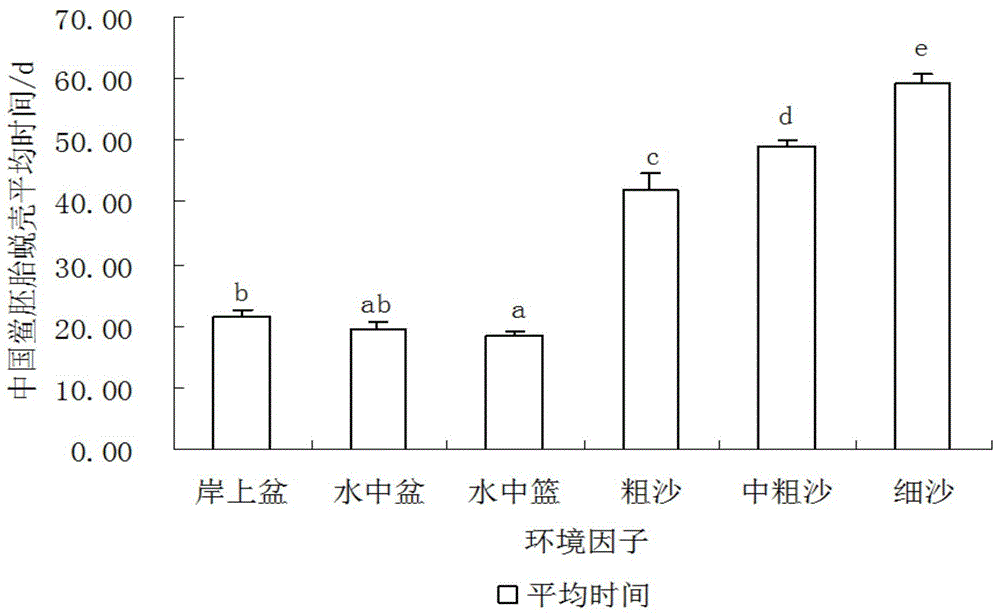Method for accelerating artificial breeding speed of horseshoe crabs of China
An artificial and high-speed technology, applied in the field of aquaculture, can solve the problem of lack of limulus embryos to shorten the time of raising seedlings, and achieve the effect of saving the cost of raising seedlings, saving the time of raising seedlings, and improving the survival rate.
- Summary
- Abstract
- Description
- Claims
- Application Information
AI Technical Summary
Problems solved by technology
Method used
Image
Examples
Embodiment
[0024] The fertilized eggs are obtained from the Chinese horseshoe crab spawning pond in the breeding workshop by self-mating and spawning. Embryo cultivation containers are white rectangular plastic pots with specifications of 36cm×28cm×13.5cm (hereinafter referred to as pots), 17cm×7cm round plastic baskets (hereinafter referred to as small baskets), and rectangular large baskets of 45cm×32cm×17cm (hereinafter referred to as large baskets). ), a 40cm×30cm×12cm black plastic basket (hereinafter referred to as the basket).
[0025] 2. Method:
[0026] Six different environmental factors, including pots on the bank of the nursery pond, pots in the water, baskets in the water and sand of three types of thickness, were used to affect the cultivation of horseshoe crab embryos.
[0027] Put the fertilized eggs produced by the same pair of horseshoe crabs in the same batch into white pots and small baskets respectively. Put 100 ovums in each white pot, water depth is 2.5-3.5cm, al...
PUM
 Login to View More
Login to View More Abstract
Description
Claims
Application Information
 Login to View More
Login to View More - R&D Engineer
- R&D Manager
- IP Professional
- Industry Leading Data Capabilities
- Powerful AI technology
- Patent DNA Extraction
Browse by: Latest US Patents, China's latest patents, Technical Efficacy Thesaurus, Application Domain, Technology Topic, Popular Technical Reports.
© 2024 PatSnap. All rights reserved.Legal|Privacy policy|Modern Slavery Act Transparency Statement|Sitemap|About US| Contact US: help@patsnap.com










